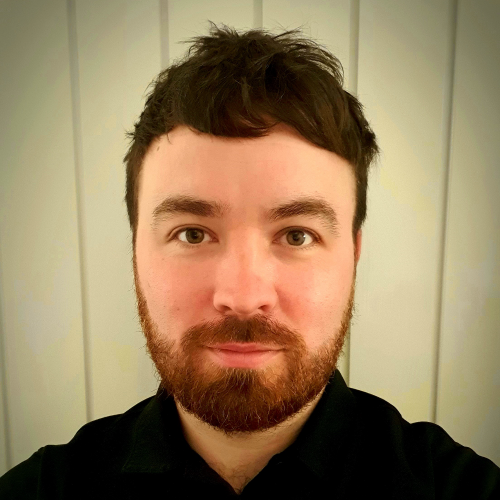What is Plane Wave Imaging?
A good place to start when talking about advanced imaging is with Full Matrix Capture (FMC); this describes the process of capturing and recording A-scan signals from every transmitter-receiver pair in a phased array probe. FMC fires each element individually for every probe position, recording a received A-scan for each element in the array. For example, for a typical 64-element array probe, the sequence begins with firing element number one and recording the response for all 64 elements in the array. Next, element two is fired, and 64 A-scans are recorded, and so on, until the end of the probe. This means that for a 64-element array utilizing FMC for each recorded scan position, 64 pulses are fired in sequence, and 4096 A-scans are captured. From all this raw A-scan data, it is possible to utilize advanced focusing techniques, like TFM, live or through post-processing.
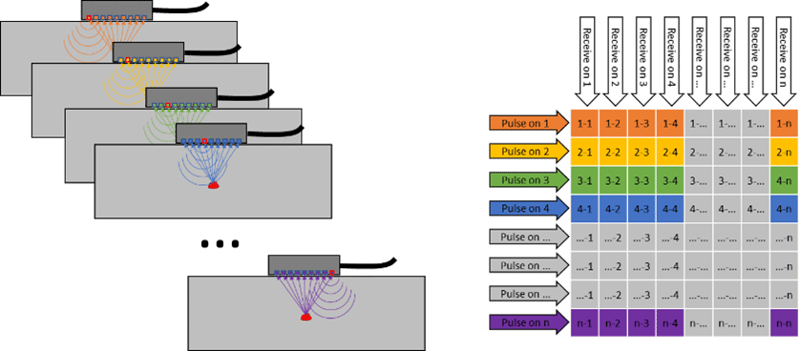
Figure 1: FMC sequence
The PWI difference
With PWI, instead of firing each element individually in emission, we can select a multi-element aperture (typically full aperture of the probe), while in reception we record elementary A-scans – one for each element. This allows us to fire focal laws with varying angles or apertures to sufficiently insonify the region of interest for inspection.
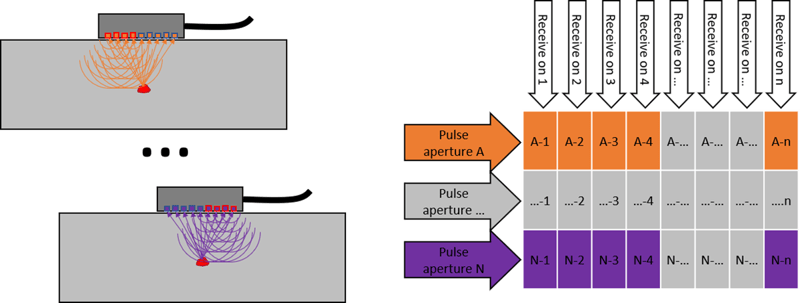
Figure 2: PWI sequence
We are able to select the beam angles that give us optimum coverage and target the area of inspection for the application, just like beam-forming phased array. Typically beams are unfocused and using the full aperture of the probe gives a large amount of acoustic energy into the component. Taking a standard weld inspection as an example, as shown in Figure 3 and Figure 4, we can see that seven beams in the emission sequence are sufficient to give full volume weld coverage. This represents 40-70 degree shear waves at a five-degree resolution. With just seven beams to fire in emission for each probe position versus 64 for the equivalent FMC acquisition, we gain a huge improvement in scanning speed and inspection efficiency.
Figure 3: PWI firing sequence for weld inspection
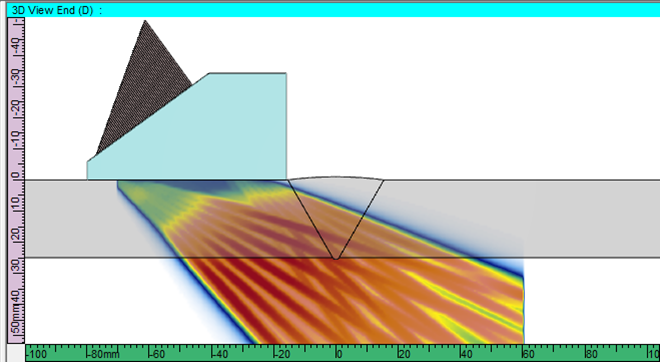
Figure 4: PWI emission beam coverage of weld
Total Focusing Method for High Resolution Imaging
The next step after capturing the raw data is to process it into a highly focused TFM image.
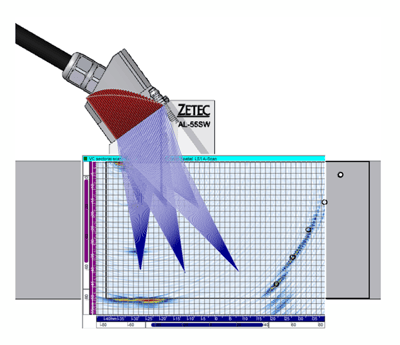 Figure 5: TFM calculation
Figure 5: TFM calculation
TFM images are constructed from the PWI data by dividing the region of interest into pixels. In its simplest form, the ‘amplitude’ of each pixel is then calculated by considering the time of flight for each pulser-receiver pair, respecting a specific wave path, and summing these together. This creates an ideally focused image giving excellent image resolution for better characterization and sizing of challenging flaws.
Thanks to Eddyfi Technologies advanced solutions, TFM computation can be very fast, carried out live during scanning for real-time imaging or through post-processing of stored raw PWI or FMC data. Offering a range of advanced PAUT instruments and software; Gekko® and Panther™ powered by Capture™, and TOPAZ®64 and Emerald, supported by UltraVision®, support both real-time PWI as well as raw data recording for offline post-processing.
PWI vs FMC - Speed
The PWI method has several key advantages compared to FMC:
- High energy excitation provides greater sensitivity and better SNR.
- Higher Pulse Repetition Frequency (PRF) and scanning speed because of significantly shorter firing sequence and less elementary A-scan signals to process.
- Significantly smaller data file size for raw data saving.
PWI of a comparable setup of FMC can be multiple times faster than FMC based TFM imaging and even faster than equivalent phased array setups for scanning speed, greatly improving efficiency and productivity of inspections. A practical example of this can be seen in Figure 6 with equivalent setups, imaging a cluster of weld porosity, acquisition is four and a half times faster with PWI-TFM than live FMC-TFM, and more than twice as quick as PAUT!
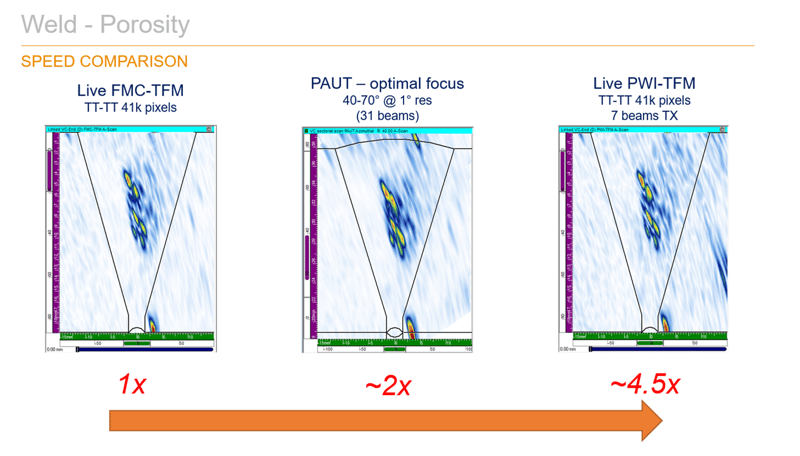
Figure 6: FMC, PAUT, and PWI Speed comparison
The TOPAZ64 is able to carry out simultaneous multi-mode PWI-TFM frames from two phased array probes at the same time as additional channels (e.g. TOFD, PAUT), so that in a single acquisition all of the relevant data can be captured in one go, without the need to perform multiple scans. In the video below, we can see PWI-TFM being performed from both sides of the weld at the same time as TOFD at a comfortable scan speed over 100 millimeters per second at 1 millimeter scan resolution!
Figure 7: High-speed multi-group PWI & TOFD
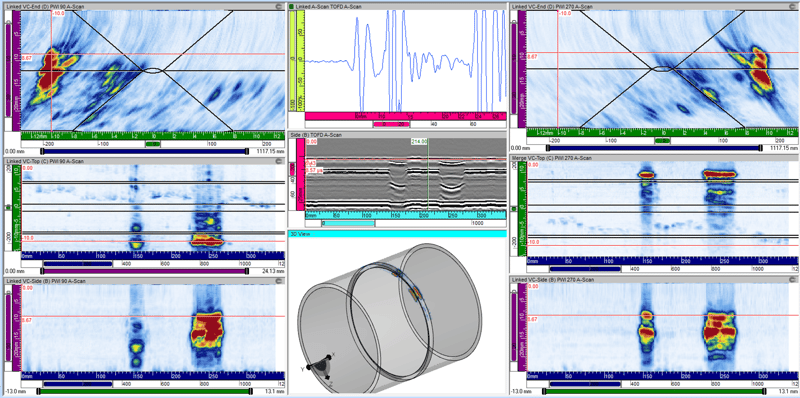
Figure 8: Multi-group PWI & TOFD data
PWI VS FMC – SNR
Thanks to the increased energy in beam emission compared to FMC, PWI can yield improvements for SNR on challenging applications. The application shown below shows comparative results of these modes for flaws in High Density Polyethylene (HDPE) pipe which has a large degree of attenuation compared to carbon steel. For comparable setups the PWI mode shows a 13dB improvement for SNR versus the FMC mode.
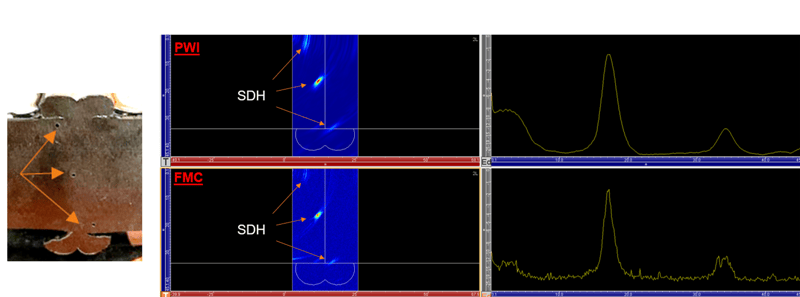
Figure 9: PWI vs FMC - SNR for HDPE
What About PCI?
Phase Coherence Imaging (PCI) sums the phase of A-scan signals rather than amplitude during TFM reconstruction and can be useful in the detection of small point reflectors such as pores or crack tips. The good news is that it can also be used with live PWI, soon to be released on the latest version of Capture, which can carry out simultaneous TFM and PCI imaging for optimum inspection efficiency.
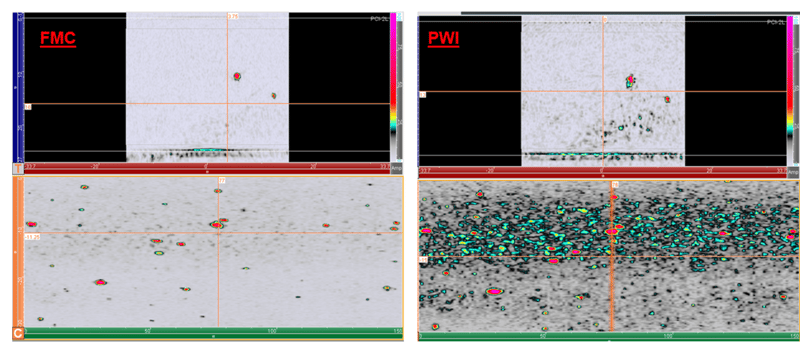
Figure 10: HTHA indications imaged with FMC and PWI
Looking at an example for High Temperature Hydrogen Attack (HTHA) – a damage mechanism characterized by ‘clouds’ of small pores – we can see the real power of live PWI-PCI combination when compared to FMC-PCI. Thanks to the PWI firing mode we can see a huge improvement in the detection capability identifying many smaller indications in the data and are able to better characterize the HTHA damage extent.
Post-Processing of PWI Data
For most instruments performing live TFM, the raw data is not stored once the TFM image is computed. However, it is possible to record that raw FMC or PWI data for post-processing, either for a single scan position of interest or encoded for a full scan. Recording FMC data has historically been intensive due to the large data files and slower scan speeds. However, PWI adds another benefit here. File sizes for raw PWI data are comparatively much smaller than FMC and consequently scan speeds are much more manageable when storing. With post-processing giving access to offline computation for in-depth analysis; this includes use of advanced algorithms in the UltraVision software package, user configurable pixel resolution, and wave paths. An example, Figure 9 shows the same porosity from the example above, where the stored PWI data has been constructed with Phase Coherence Factor (PCF) & Delay Multiply and Sum (DMAS) algorithms, showing significant improvement in SNR.

Figure 11: PWI raw data reconstruction with PCF and DMAS
The benefits of PWI and TFM are evident, offering faster scanning speeds and higher resolution TFM imaging while improving overall probability of detection when up against challenging applications. To learn more about our advanced PAUT inspection solutions, contact our experts today, and subscribe to the blog to stay Beyond Current with weekly news delivered direct to your inbox!



